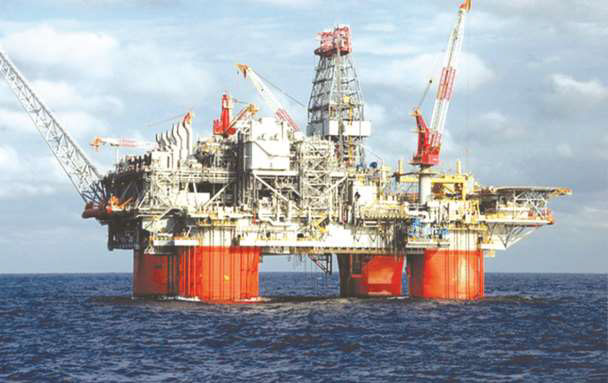Organisation of Petroleum Exporting Countries, OPEC, revealed that Nigeria’s rig count has dropped to five in April 2021, thus indicating a decrease of 67 percent compared to 16 recorded in the corresponding period of 2020.
The OPEC May 2021 Oil Market Report also disclosed that the nation’s rig count, a major index of measuring exploration and production in the oil and gas industry, stood at six before dropping to the current five.
Read Also: Oil Industry Generated N23.8bn VAT in First Quarter – NBS
This means that the nation has not been investing adequate funds in new projects, capable of increasing its reserves, which the Department of Petroleum Resources, DPR puts at 37 billion barrels.
Commenting on the development, a Port Harcourt-based Energy Analyst, Dr. Bala Zaka, attributed the rig count to the inability of the nation to pass its Petroleum Industry Bill, PIB into law.
He said: “The delay in the passage of the PIB into law has not encouraged many foreign and indigenous companies to invest in new projects, which could have culminated into the making of new finds as well as commercial reserves.”
However, the report showed that the rig counts of other African countries remained much higher than Nigeria, meaning that such feats were fueled by increased investments during the period. Specifically, Algeria and Libya led with 27 and 12 respectively, while Nigeria and Angola came third and fourth respectively during the period under review.
Nevertheless, OPEC disclosed that it was committed to promoting or encouraging investment in Nigeria and other member states.
In the upstream, it stated: “Regardless of all the challenges and uncertainties, OPEC Member Countries continue to invest in additional upstream capacities. On top of the huge capacity maintenance costs that Member Countries are faced with, they continue to invest in new projects and reinforce their commitment to the oil and gas market as well as to the security of supply for all consumers.”
Needless to say, this is only a reflection of OPEC’s well-known policy that is clearly stated in its Long-Term Strategy and its Statute. In the medium-term, about 160 projects, with an overall estimated cost of some $156 billion, are being undertaken by OPEC Member Countries.”
In the downstream, it also stated: “The upcoming projects landscape for the medium-term (2016–2021) for OPEC Member Countries’ downstream sector is affected by two factors: the lifting of international sanctions on Iran, and the return of Gabon to the Organization.
“A significant number of new investments are set to occur in OPEC Member Countries.
“Almost 8 mb/d, of potential refining projects in OPEC Member Countries with a relatively new surge in capacity additions from Iran, if all projects are implemented as planned.
“However, a review of viability of these projects suggests that around 2.2 mb/d of distillation units will be added to the refining sector in OPEC Member Countries in the period 2016–2021.
“This combines around 1.7 mb/d of additional crude distillation capacity and 0.44 mb/d in the form of condensate splitters.
“Condensate splitters additions are planned in Iran and Qatar and set to start falling off by 2020. The overall OPEC Member Countries’ distillation capacity (including splitters) is set to reach a level of 13.3 mb/d by 2021.
“An important set of secondary units will also be undertaken during the period 2016–2021, the bulk, around 1.9 mb/d, will be added in the form of desulphurization units, and the rest, estimated at around 1.2 mb/d, will come in the form of conversion capacity (0.62 mb/d), and octane units (0.63 mb/d).
“The additional refining capacity in OPEC Member Countries will come from condensate splitters, new greenfield and ‘grassroots’ projects, supplemented by expansions at existing facilities. “The largest OPEC Member Countries’ new refineries are megaprojects, expected to come on stream during the medium-term period; these are in Kuwait (Al Zour project), Saudi Arabia (Jizan project), and Venezuela (Anzoetagui).
“Other relatively sizable projects, with a common trend among crude producers to process heavy crudes domestically and also aiming to satisfy increasing local demand, include new refineries in Lobito, Angola; Manabi (Refinery del Pacifico), Ecuador; Khozestan and Kermanshah projects in Iran; Fujairah and Dubai projects in the UAE.”
It also added: “Algeria has chosen to settle for medium capacity refineries in Arzew, Hassi Messaoud, and Tiaret to satisfy its growing local refined products demand. No clear picture can be envisaged yet from projects in Libya.
“The total estimated additions will bring OPEC Member Countries’ base capacity to over 13.3 mb/d in 2021 and will require a level of investments of $66.5 billion in order to implement the foreseen additions (distillation and secondary units) between 2016 and 2021.
“It is worth recalling that this is part of OPEC’s ongoing efforts to support market stability by supplying required products to consumers.”

